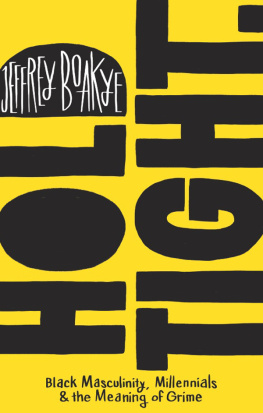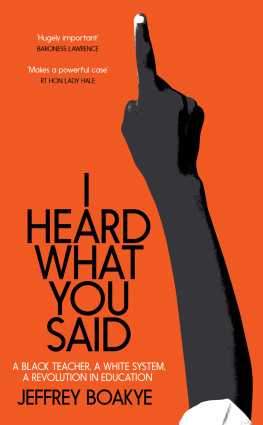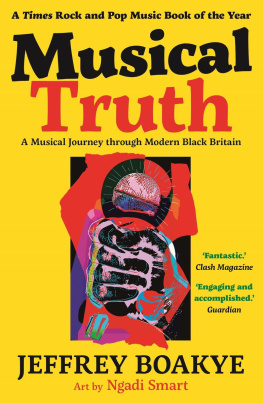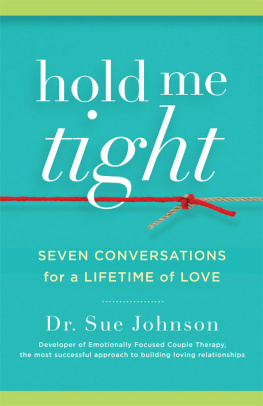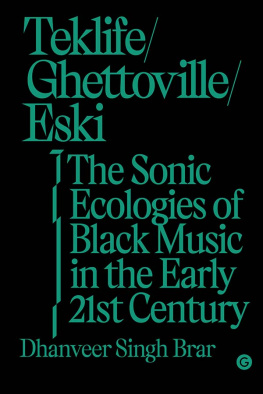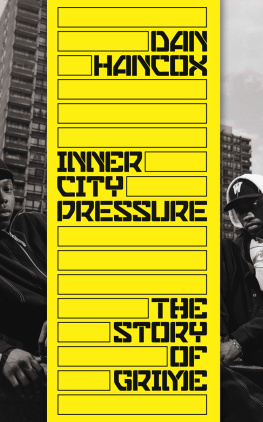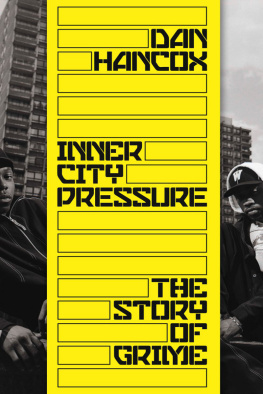Contents
Guide
Hold Tight
[Black Masculinity, Millennials
and the Meaning of Grime]
by Jeffrey Boakye
Influx Press, London
Published by Influx Press
5a Wayland Avenue, London, E8 2HP
www.influxpress.com / @InfluxPress
All rights reserved.
Jeffrey Boakye, 2017
Copyright of the text rests with the author.
The right of Jeffrey Boakye to be identified as the author of this work has been asserted by them in accordance with section 77 of the Copyright, Designs and Patents Act 1988.
This book is in copyright. Subject to statutory exception and to provisions of relevant collective licensing agreements, no reproduction of any part may take place without the written permission of Influx Press.
First published 2017.
eBook conversion by Geethik
ISBN: 978-19103122-6-1
Edited by Kit Caless
Proofreader: Danny Arter
Cover art and design: Dan Evans
This book is sold subject to the condition that it shall not, by way of trade or otherwise, be lent, re-sold, hired out, or otherwise circulated without the publishers prior consent in any form of binding or cover other than that in which it is published and without a similar condition including this condition being imposed on the subsequent purchaser.
For my wife, Sophie, and our first son, Finlay.
Bars
Black music, like always, paved way for the mainstream like hallways. And the verdict, like court days, can be hung like a jury split four ways. Which genre, from the old days, contributes most? Gave the most play? Case in point Grimes DNA: double helixed long before it was named. It goes back to the clash, back to the get-money streets and the cash. Back to the champagne dance and the flats and the top-floor pirates pulling back wax. Back to the jungle, back to the chat, back to the tape on the stereo stack and we cant overstate the fact that Jamaicas a major part of the narrative track. Brrap.
Early traits were harnessed: Talking the loudest, talking the hardest, talking the fastest, talk from the margins, MC styles flourishing like gardens after a season of seeds were planted. What came first? What came after? Who what why when how whereafter? What was the question if Grime was the answer? Young black boys with ancient fathers, family trees with distant branches, sisters, olders, mothers, aunts and whole generations all took part in the crafting of something big from the start. Black UK: the diaspora was large. Large as a continent with all the confidence to spread wildfire after a spark.
Brand new but we always knew. Doors kicked open and sauntered through. Whos that became the whos who; who knew what a 2-Step rhythm could do to the market? Bars got parallel parked like cars from MCs far from the charts, if youre asking what made Grime get started, look to the history, look to the past. Look to pavement, from the ground up, where the soundboys of London turned the sound up. Lyrics for lyrics turned the crowd up and UKG just got them wound up. Frustrated, had to go make it. Matrix downloaded the bass kicks. Syncopated, Rinsell play this even if a champagne rave cant take it.
Now, with a context to bear. A whole new problem for Anthony Blair. Young black people who lived over there in the places containing the least of the share. Not much money and not much care being taken by those who were starting to fear; a newfound voice from a new generation, part deprivation and part cavalier. Brave enough for the violence, louder than silence, too defiant for neat compliance. Stereotypes always need defying; sharing a mic couldnt be more pliant. Grimes not an ASBO soundtrack. Even though theres an ASBO around that, depiction of youth delinquency that they gave to black masculinity in its infancy, that was said to be loud, aggressive beyond aesthetically.
By the time you got to 03, I guess you could say it was always meant to be. Meant to be found, meant to be violent meant to be loud. Meant to be quirky, meant to be different, meant to be hard to define in an instant. What do you call it? What does it sound like? Hard to describe in an audio soundbite. Hard to describe for wide-eyed journalists who had not, could not have heard of this... Genre, culture, scene? Lifestyle for mic-bound teens? And here were starting to see it emerge from the margins; freed. Seen.
Tracklist
Amen, Brother
The Winstons (1969)
In the month of September, in the year 2006, a man died. The man died on the streets of Atlanta, Georgia, USA. He had very little money and no home. During his life the man did many things, including drumming in various bands. In the year 1969 he drummed on a song with a band called The Winstons. The man spent one hundred and fifty-three seconds drumming throughout this song. For six of these seconds, he was drumming unaccompanied by any other instrument. This is known as a drum break. The song is called Amen, Brother. The drum break in Amen, Brother is known as the Amen Break. The man who drummed the Amen Break is, was, Gregory Sylvester Coleman.
You have heard the Amen Break. You have heard it hundreds, if not thousands of times. You have heard it so often that you do not recognise it as a distinct part of a distinct song. Amen, Brother was recorded and pressed onto vinyl, a material that has been used to mass produce audio recordings in the latter half of the 20th Century. The Amen Break has since been sampled thousands of times, in thousands of songs. Slowed down, it became a staple part of much Golden Era US hip hop of the late 80s and early 90s. Sped up, it formed the backbone of many dance music sub-genres in the UK, most notably Breakbeat, Jungle and Drum and Bass. The Amen Break is deeply entwined in the DNA of modern dance music.
Grime, in its lineage, is inextricably linked to the Amen Break. The conflation of Dancehall/Ragga soundclash culture with Amen-bred breakbeat sparked a revolution in UK dance music that spidered off into Jungle and eventually Grime, via Dubstep, IDM, Breakcore and many others. A suitably long sentence for such a far-reaching sonic evolution.
Any book about Grime has to mention the Amen Break, because it is instrumental to genres of electronic dance music that Grime branches from. So even though youll struggle to find a Grime track that explicitly features the Amen Break, this book had to start with Gregory Sylvester Coleman. Itd be rude not to, hence my little eulogy three paragraphs ago. And now the beginnings out of the way, we can begin, again.
Under Mi Sleng Teng
Wayne Smith (1985)
Some of this is really simple, and some of this is really rather complicated.
Simple:
In 1981, Casio released the model MT-40 electronic keyboard. The MT-40 included, among its very exciting suite of digital features, a Rock preset. The Rock preset comprised a repetitive bass riff of an addictively crunchy digitally synthetic quality.
Simple:
In 1985, three years after its discontinuation, an MT-40 found its way into the possession of a young man called Noel Davey, in Jamaica. Noel Davey was an aspiring musician who couldnt quite afford the Yamaha DX-7, a more advanced digital synthesiser that unfortunately also came with a more advanced price tag.
Complicated:
Noel Davey began a creative partnership with a young reggae vocalist called Wayne Smith. Wayne Smith lived very close to a reggae producer called Lloyd James, also known as Prince Jammy. Prince Jammy had collaborated with Wayne Smith on close to two albums worth of original material since 1981, at which time Smith was 14 years old.

